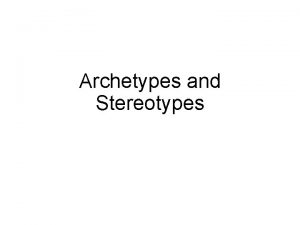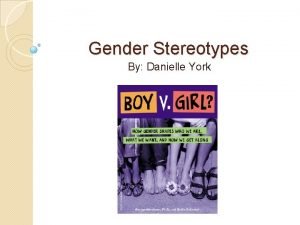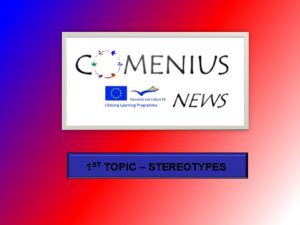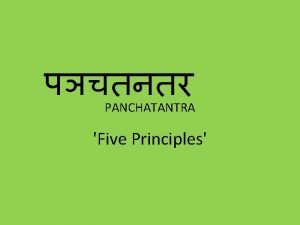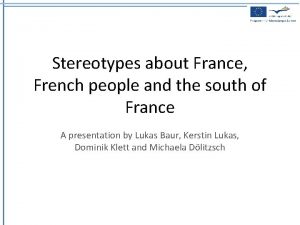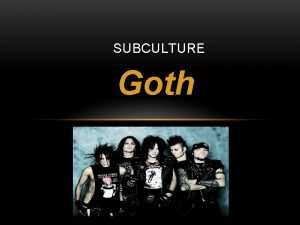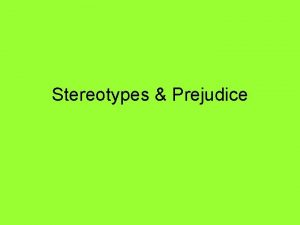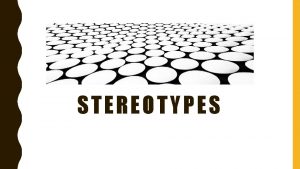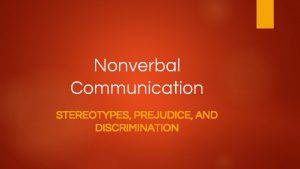Stereotypes Prejudice What is a stereotype a stereotype





- Slides: 5

Stereotypes & Prejudice

What is a stereotype? -a stereotype is “the positive (also known as micro-aggression) or negative beliefs that we hold about the characteristics of social group”. Fiske, S. T. , & Lee, T. L. (2008) -Stereotypes are generalized because one assumes that the stereotype is true for each individual person in the category. It’s basically used to give a general (more than false)representation to a group of people not based on the individuals of that group. Examples: 1. “Individuals of asian descent excel academically. ” 2. “African Americans only listen to rap. ” 3. “All women are bad drivers. ” 4. “Men can’t cook and only women should cook. ”

Why are stereotypes a problem? • stereotypes are a problem because they usually lead an individual to be prejudice and racist to a particular group of people. • stereotypes prominent enough might even start to create stereotype threats. • Stereotype threats are performance decrements that are caused by the knowledge of cultural stereotypes. Spencer, Steele, and Quinn (1999) • For an example: Steele and Quinn did a study where they reminded women over and over that they are terrible at math. When they took the tests they did terrible on it.

What does it mean to be prejudice? -Being prejudice means to have an unjustifiable negative attitude toward the members of that group. -Prejudice more than likely brings anger, hostility, discomfort and even hatred towards that particular group. Prejudice usually is targeted towards marginalized groups (groups that are underrepresented in terms of social hierarchy. Ex: LGBTQ+, people of color, etc. )

Sources Correll, J. , Park, B. , Judd, C. M. , & Wittenbrink, B. (2007). The influence of stereotypes on decisions to shoot. European Journal of Social Psychology, 37(6), 1102– 1117. Correll, J. , Park, B. , Judd, C. M. , Wittenbrink, B. , Sadler, M. S. , & Keesee, T. (2007). Across the thin blue line: Police officers and racial bias in the decision to shoot. Journal of Personality and Social Psychology, 92(6), 1006– 1023. Cunningham, G. B. (2011). The LGBT advantage: Examining the relationship among sexual orientation diversity, diversity strategy, and performance. Sport Management Review, 14(4), 453 -461. Fiske, S. T. , & Lee, T. L. (2008). Stereotypes and prejudice create workplace discrimination. In A. P. Brief (Ed. ), Diversity at work (pp. 13– 52). Jackson, L. M. (2011). The psychology of prejudice: From attitudes to social action. Washington, DC: American Psychological Association.
